Direct Translation via Google Translate. Edited.
Text taken from the website of Elijah J. Magnier. The rest of the text is in Russian and behind a paywall.
[ColonelCassad] Rapid military developments in Syria, without resistance from the Syrian army, led to the fall of President Bashar al-Assad and his unopposed departure from Damascus. This transition was the result of high-level negotiations between key players, including Turkey, Russia and Iran. However, the surprises in the Middle East are far from over; they are only just beginning with this transition of power and the attempt to create a new state with very different standards.

One of the key reasons for the rapid fall of the Assad regime was the strategy employed by the advancing forces in the towns and villages they captured, especially in the countryside of Idlib, Aleppo and its surroundings (apart from isolated extremist actions), but also in Hama, Homs, Damascus and southern Syria.
The attackers deliberately distanced themselves from the brutal tactics that had united the world against the forces fighting the Syrian army since 2011.
This shift in approach allowed the regime to collapse like a snowball rolling down a mountain, with minimal resistance as one city after another surrendered. The orderly surrender occurred without significant bloodshed after protracted negotiations led by the main mediators: Turkey, Iran, and Russia.
Russia and Iran lost a staunch ally and a strong base in the Middle East, leaving Turkey as the dominant power. Istanbul provided military support to the advancing forces, coordinated their operations, and carefully directed their actions through a joint operations room. Under Turkish leadership, these forces achieved all of their objectives in areas previously controlled by the Syrian army. However, they did not extend their success to areas controlled by U.S.-backed Kurdish forces in the northeast, where power extended to Deir ez-Zor and Raqqa.
Syria remains deeply divided, with the northeast under Kurdish control, Israel expanding its occupation of new Syrian territory in the south, and no unified factions that could form a cohesive ruling authority. Instead, Prime Minister Mohammed Ghazi al-Jallali has been appointed to lead an interim administration running the country. What events have brought Syria to this point, and what does the future hold?
As head of the interim administration, Prime Minister al-Jallali will likely be responsible for the day-to-day functions of the state while preparing it for a longer-term transition. This includes maintaining basic governance, preventing a complete collapse of institutions, and overseeing negotiations to achieve a more permanent political settlement. Al-Jallali will have to navigate deep divisions as he works with opposition groups, external actors, and the remnants of the Assad-era bureaucracy. His ability to manage these relationships will determine whether Syria can move toward stability. His appointment signals to the international community that Syria is attempting to rebuild itself within a framework that combines continuity and change. However, it also raises questions about whether genuine reform is possible with a figure associated with the previous regime. Al-Jallali’s leadership during the transition will set the tone for Syria’s transition. Whether he can maintain stability and steer the country toward a new political structure will depend on his ability to build consensus among internal and external actors.
His tenure will likely determine whether Syria moves toward unity or remains divided and uncertain.
Many factions in Syria have united under the leadership of the Repel Aggression Coalition, forming a single alliance that includes groups such as Jaysh al-Izza, Jaysh al-Ahrar, Faylaq al-Sham, Al-Quwat al-Mushtaraka, Hay’at Tahrir al-Sham, Harakat Nour al-Din al-Zinki, the Sultan Murad Brigade, Ansar al-Tawhid, Suqour al-Sham, Ahrar al-Sham, the Sulayman Shah Brigade, the Al-Hamza Division, and the Turkistan Islamic Party Brigades. Among them, Ahrar al-Sham and Hay’at Tahrir al-Sham stand out as the largest and most influential.
A call has been announced for a “National Transitional Council” (NTC) to unite all elements of the revolution. This comes after Abu Muhammad al-Julani said that existing institutions would remain under the current prime minister in order to maintain stability following the unexpectedly rapid collapse of the Syrian government’s control over major cities.
However, the path forward remains uncertain. It is not yet clear how the state will be governed in the coming weeks or who will lead the effort to draft a new constitution and prepare for parliamentary elections. The main challenge will be creating a coherent governance structure and reconciling the diverse and often conflicting ideologies of the combined factions.
As these factions, with their different backgrounds and agendas, try to forge a unified vision for Syria’s future, questions remain about who will wield ultimate authority and how they will navigate the complexities of building a functioning state.
The success of this fragile alliance will likely determine whether Syria can move toward stability or remain divided and uncertain.
The creation of the National Transitional Council highlights the enormous challenges of uniting disparate factions into a coherent governing structure. While the Repel Aggression coalition suggests a temporary convergence of interests, the long-term sustainability of such an alliance remains questionable.
Factions within the NTC span a wide range of ideologies. Groups such as Hay’at Tahrir al-Sham (HTS) and Ansar al-Tawhid advocate sharia-based governance of Syria. Their extremist vision risks alienating moderate factions and potential international supporters. Large groups such as HTS and Ahrar al-Sham may claim disproportionate influence, risking the marginalization of smaller factions and internal disunity. At the same time, Ahrar al-Sham and Faylaq al-Sham combine Islamic principles with nationalist aspirations, seeking a pluralistic model of governance that includes diverse Syrian groups.
On the other hand, factions such as the Sultan Murad Brigade and the Turkistan Islamic Party Brigades include foreign fighters and minorities, and they pursue unique goals, complicating the prospect of national unity. Smaller factions often support democratic or technocratic governance, which can conflict with the dominant Islamist forces in the coalition. These differences highlight the difficulty of creating a common vision of governance and policy.
Israel has formally abandoned the 1974 disengagement agreement with Syria, declaring its intention to renegotiate the dynamics on the border. In a bold move, Israel captured Mount Hermon and several villages in Quneitra, declaring Syria an open battlefield and signaling its intention to advance further into Syrian territory with blatant disregard for international norms. The Israeli Air Force conducted a sustained campaign, systematically attacking and destroying more than 100 strategic targets, including Syrian air defense systems, ammunition depots in Damascus, and key installations at several airports across the country, further weakening Syria’s already depleted defenses.
On the other hand, Russian forces, deployed on the Syrian-Israeli border primarily for stabilization following the Syrian civil war, acted as a buffer between Israeli and Syrian forces, preventing escalation. They were stationed primarily in the Quneitra and Golan Heights areas and served as intermediaries, restraining both sides from aggressive actions that could lead to a wider conflict. However, their presence was also a symbol of Russia’s influence in the region and its role as a security guarantor for the Assad regime.
Recent events have forced Moscow to abandon these positions due to the security risks to its soldiers, creating a vacuum that has allowed Israel to expand its operations and consolidate its control in southern Syria.
No international power has stepped up to defend Syrian sovereignty or oppose Israel’s annexation of additional Syrian territory. For Prime Minister Benjamin Netanyahu, the occupation of parts of Syria represents a major achievement in Israel’s strategic ambitions. Not only does the move strengthen his political position at home, it also reinforces Israel’s territorial and military dominance at a key moment in the evolution of the Middle East’s geopolitical situation.
Moscow, which has provided refuge to Bashar al-Assad and his family, has announced that it remains in touch with all parties involved in Syria, maintaining a pragmatic approach toward the new authorities. However, uncertainty hangs over Russia’s strategic presence in the region. The possible loss of the Khmeimim and Tartus military bases would be a significant loss, as these facilities provide the only access to the warm waters of the Mediterranean, a critical geopolitical asset for projecting influence in the region.
Since the outbreak of the Syrian civil war in 2012, Turkey under Prime Minister Recep Tayyip Erdogan has taken a firm stance against President Bashar al-Assad. Erdogan has repeatedly stated that his goal is to visit Damascus and pray at the Umayyad Mosque. Today, with the fall of Assad, this goal seems achievable, cementing Turkey’s status as the “godfather” of the new Syrian leadership.
Turkey has long-term goals in Syria: securing its borders, countering Kurdish autonomy, and strengthening its influence in northern Syria. To this end, Ankara has used military action, economic integration, and support for opposition groups and jihadists. However, achieving these goals depends on Turkey’s ability to balance domestic political objectives, regional rivalries, and international interests.
Turkey has established zones of influence in regions such as Afrin, Jarablus, and al-Bab, where it exerts significant administrative, economic, and military influence. Turkish currency and goods dominate local markets, and the establishment of schools and cultural institutions has helped spread the Turkish language and culture.
These actions also help Turkey address its domestic challenges. It hosts more than 3.5 million Syrian refugees, and anti-refugee sentiment has become a significant political issue. By creating “safe zones” in northern Syria, Ankara aims to repatriate significant numbers of refugees, reducing domestic tensions and demonstrating its role as a stabilizing force in the region. However, such ambitions have drawn opposition from Russia and Iran, especially in light of Turkey’s resettlement of opposition-supporting Syrians in areas cleared of Kurdish forces. This process of demographic engineering is aimed at weakening Kurdish influence and strengthening Turkey’s position.
Turkey’s military campaigns and support for offensive forces are also aimed at undermining U.S.-backed Kurdish militias in northeastern Syria. Although the United States relies on Kurdish militias such as the Syrian Democratic Forces (SDF) to fight ISIS, Ankara views the alliance as a threat to its security. Turkey’s operations demonstrate to Washington that it will not tolerate a prolonged Kurdish presence on its borders, even if it means disrupting American plans to stabilize the region.
Despite the fall of the Assad regime, the fighting in Syria is far from over. Fighting continues in northeastern Aleppo between Turkish-backed forces and U.S.-backed Kurdish militias. Turkey views these Kurdish forces not as Syrian militias but as affiliates of the Kurdistan Workers’ Party (PKK), which is designated a terrorist organization in Turkey and internationally. Turkish Foreign Minister Hakan Fidan recently underscored this position, saying that these forces are “foreign fighters who have gathered in Syria and they must all be eliminated.” The Kurdish forces remain determined to defend their autonomy and continue to receive U.S. support, creating a protracted conflict that limits Ankara’s ability to achieve its goals.
The United States, however, takes a different stance. While Washington also considers Ahmed al-Shaar (Abu Muhammad al-Julani), the leader of the task force, a terrorist, it continues to support Kurdish groups, including militias linked to the PKK, which it also officially recognizes as terrorist organizations. Yet these same Kurdish forces play a key role in protecting the American presence in Syria. U.S. forces also provide them with air cover and prevent attacks on them, creating a paradoxical dynamic. The U.S. will only recognize new leaders in Syria if there is a smooth transition.
In recent days, Kurdish forces have advanced and taken control of Deir ez-Zor and Raqqa, adding these territories to the already-held regions of Hasakah and Qamishli, which are critical to Syria’s economy and resources. The new Syrian leadership is unlikely to accept this development, as it exacerbates tensions in the northeastern region, which contains the country’s grain basket as well as oil and gas resources. This Kurdish control presents an ongoing dilemma and raises the question of federalization, especially given the different identities of the Kurds, Alawites, and Druze in Syria.
However, Turkey’s staunch opposition to Kurdish autonomy will make the creation of a Kurdish state similar to Iraqi Kurdistan much more difficult. Ankara is unlikely to tolerate even the hint of a Kurdish enclave in northeastern Syria, ensuring that the issue remains a contentious and unresolved point in the country’s fragmented landscape.
Read the rest at the link
Syria. The last 75 years
Text taken from the Telegram channel of alter_vij
Commentary by Russian military journalist is in italics.
[ColonelCassad] In Syria over the past 75 years, not counting external wars:
1949 – three military coups, the supreme power changes as many as three times in one year
1951 – military coup
1954 – general rebellion and coup
1961 – military coup
1962 – as many as two military coups in one year
1963 – military coup, the Baath Party comes to power (one of the leaders is Assad Sr.)
1966 – military coup, where Assad Sr. is one of the main participants
1968-69 – riots in the main cities of the country, suppressed by the army
1970 – military coup, Assad Sr. comes to power
1976-82 – civil war between the Assad government and the Islamists. Mass killings in Aleppo. The city of Hama, mentioned more than once in December 2024, was completely destroyed during the fighting in 1982...
1984 - President Assad's younger brother unsuccessfully tries to overthrow his brother and seize power.
Since 1985, 20 years of relative stability begin under the harsh dictatorship of the Assad clan
2000 - Assad Sr. dies, power passes to his son
2005 - Vice President Khaddam, a close associate of his late father, unsuccessfully attempts to overthrow Assad Jr.
Since 2011 - as we all know, an ongoing war.
So 2024 and even 2025 will not be the last years of the eternal Syrian turmoil...
P.S. And what beauty was happening there throughout the 19th century! Emperor Nicholas I first thought about introducing Russian troops into Syria in 1840, when the "Egyptians" and "Turks" were once again fighting for Damascus and Aleppo during the civil strife within the Ottoman Empire.
Russian military intelligence began systematic work on the lands of modern Syria while Pushkin was still alive...
For five years, from 1834 to 1839, Russian officers worked continuously in Palestine and Syria. The first to survey the region for the possibility of military operations was Colonel of the General Staff Alexander Duhamel, who was listed as consul in Egypt. Then Lieutenant Colonel Pyotr Lvov worked in Syria. This native of the Tver province, a veteran of wars with the Turks and Polish rebels, compiled the first military map and topographic description of Syria in the style: "... here a road cut into the rock winds, and Beilan in a military sense would deserve special note."
Beilan is now the Turkish Belan in Hatay, where there are still more Arabs than Turks, and the line of the Syrian-Turkish border was recognized by Damascus only in 2011 and almost immediately "unrecognized" after Erdogan supported the internal Syrian rebellion.
But let's go back to the 19th century.
Emperor Nicholas I personally familiarized himself with the map of Syria and other documents of Lieutenant Colonel Lvov, leaving his own notes on them. As a result of this acquaintance, the lieutenant colonel became a colonel and received a lifelong pension of 2,000 rubles per year.
Following Pyotr Lvov in Syria and Palestine in 1838-39, Captain of the Life Guards Pavlovsky Regiment Joseph Dainese, assistant to the quartermaster general of the Active Army, worked. This Italian, who transferred to Russian service, compiled a "military survey map" and a detailed "Memoire sur la Syrie en 1838" (written in French, "Report on Syria in 1838").
Based on the work of Duhamel, Lvov and Dainese in St. Petersburg, the Department of the General Staff of the Ministry of War compiled the following summary in 1840: "The conquest of Syria, given the disposition of the inhabitants to the advancing army, is possible by acting from Anatolia during one 7- or 8-month campaign, but given the hostility of the steppe and mountain tribes, offensive actions, even from Anatolia, will be extremely difficult, will require a strong army and can be successful only with the slowest course of the war, special caution and inevitable sacrifices."
https://t.me/alter_vij/3365 - zinc
PS. Find Bashar al-Assad in the picture, who has recently become a Muscovite. Perhaps he will vote for Sobyanin in the elections.
The Sobyanin reference refers to Sergey Sobyanin, current mayor of Moskva who is apparently running for reelection.
|
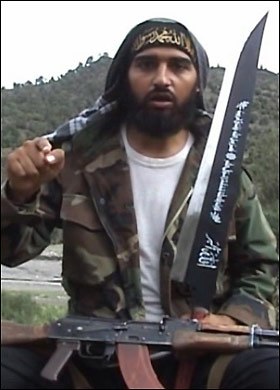 ...formerly ISIS or ISIL, depending on your preference. Before that they were al-Qaeda in Iraq, as shaped by Abu Musab Zarqawi. They're really very devout, committing every atrocity they can find in the Koran and inventing a few more. They fling
...formerly ISIS or ISIL, depending on your preference. Before that they were al-Qaeda in Iraq, as shaped by Abu Musab Zarqawi. They're really very devout, committing every atrocity they can find in the Koran and inventing a few more. They fling 
 ...Arabic term meaning
...Arabic term meaning 
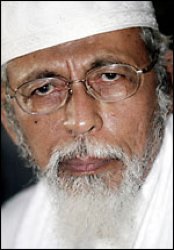 Abu Bakar Bashir
Abu Bakar Bashir ...formerly ISIS or ISIL, depending on your preference. Before that they were al-Qaeda in Iraq, as shaped by Abu Musab Zarqawi. They're really very devout, committing every atrocity they can find in the Koran and inventing a few more. They fling
...formerly ISIS or ISIL, depending on your preference. Before that they were al-Qaeda in Iraq, as shaped by Abu Musab Zarqawi. They're really very devout, committing every atrocity they can find in the Koran and inventing a few more. They fling 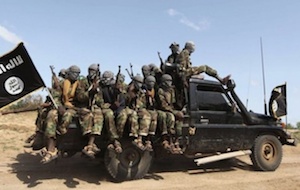 ...formerly ISIS or ISIL, depending on your preference. Before that they were al-Qaeda in Iraq, as shaped by Abu Musab Zarqawi. They're really very devout, committing every atrocity they can find in the Koran and inventing a few more. They fling
...formerly ISIS or ISIL, depending on your preference. Before that they were al-Qaeda in Iraq, as shaped by Abu Musab Zarqawi. They're really very devout, committing every atrocity they can find in the Koran and inventing a few more. They fling 
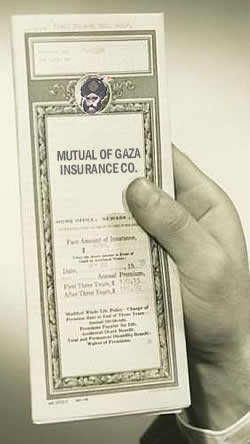 ...a contraction of the Arabic words for "frothing at the mouth",...
...a contraction of the Arabic words for "frothing at the mouth",... ...a Moslem country located in the Horn of Africa. It is noted for its affinity for rule by ex- or current generals, its holy men, and for the oppression of the native Afro population by its Arab conquerors. South Sudan, populated mostly by the natives, split off from Sudan proper, which left North and South Darfur to be oppressed by the guys with turbans...
...a Moslem country located in the Horn of Africa. It is noted for its affinity for rule by ex- or current generals, its holy men, and for the oppression of the native Afro population by its Arab conquerors. South Sudan, populated mostly by the natives, split off from Sudan proper, which left North and South Darfur to be oppressed by the guys with turbans...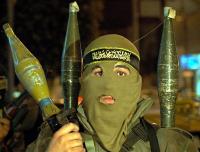 ...a contraction of the Arabic words for "frothing at the mouth",...
...a contraction of the Arabic words for "frothing at the mouth",...